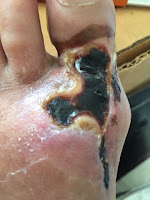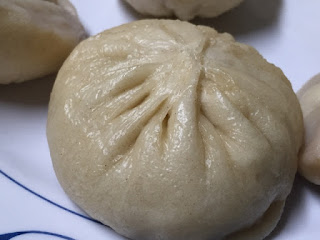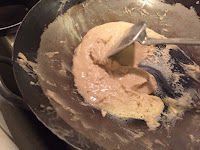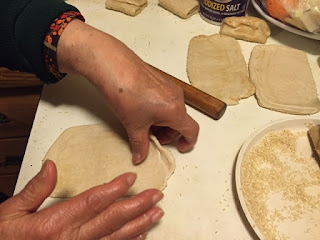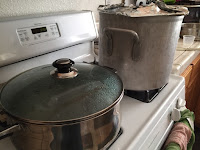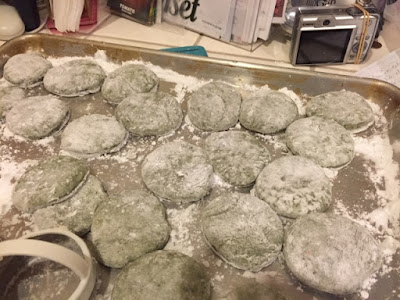My bunion surgery was five days ago on March 8th, 2016. After trying the insole foot arch support to relieve pain for the ball of the foot, X-ray showed severe deformity of the toes bending inward. The surgery, I thought went well. But I didn't know I was given a second dose of anesthesia because I woke up too early during the surgery. That made me sick to the stomach after leaving the surgical center. I threw up as I was getting off the car. I thought it would pass and went in the house. The fiasco continued on three more times. That's when I noticed the blood everywhere on the floor. I asked my family member to grab a plastic bag, covered my foot, and the blood filled it immediately. After returning to the surgical center - as I left the place 20 minutes ago, I opted not to go to the emergency room, as you or I know they want you to fill out forms and take number to wait if you did not arrive in an ambulance. The surgical center staff were bit confused with the procedure since they already released me earlier - to send me to emergency room or to send me to doctor's office. They made an appreciative decision, they took me inside. They got all my information to work with. They were deciding to send the doctor over or to ask me to go to his office. I interjected immediately that my podiatrist office is on the 2nd floor, and that he does not have a wheel chair. And as they saw how much blood was in the plastic bag, they decided to call my podiatrist back. My doctor came and checked and redressed it, and he explained to me about the nausea experience due to side effects from anesthesia. After everything is in control, I left for pharmacy to pick up the anti-nausea pills. Just with one pill, I felt better. The pain killer medication is taken every four hours.
Luckily I have this automated Polar Icing machine to keep my leg iced conveniently.
My post-op appt was two days later.
It was not a pretty sight. As the podiatrist clean the area to remove the bandages, I noticed how swollen my foot is and with lots of bruise color. He applied antibiotic ointments.
It was not a pretty sight. As the podiatrist clean the area to remove the bandages, I noticed how swollen my foot is and with lots of bruise color. He applied antibiotic ointments.
After brief light exercise I need for my left knee surgery and shower. I don't know what is going on, but the iodine would not wash off. It's like a coat of plastic and has become a part of the skin. I applied warm water and kept the area moist. After five minutes, I tried to wash it off with soap, but it would not wash off. All I can do is to scrub them off - practically rubbing the thin layer of skin off. I think I am allergic to iodine? My skin feel so painful. I removed the bandages afterwards to change the dressing. I was a bit horrified from the way it looked. I cleaned around it, took pictures, and sent them off to the doctor. I called him, and he explained that what I see is normal after this surgery.
Ouch! Blisters??? Infection? I am allergic the antibacterial ointment??
All around, my skin looked raw. And what!! the stitches opened up? Maybe the butterfly tape should not have been taken off?? I was in shock and fear. I let my foot air dry for good ten minutes before I dress it up lightly. I just cannot handle the heat built up under the bandages and elastic band around my foot. In the meantime, my podiatrist called and asked me to wrap it back and also wrap it with elastic wrap to keep pressure to keep the area from swelling. Take medicine. Icing the back of the knee and keep it raised.
I hope it will becomes better by Monday.
Seventh Day - Monday. When I got off the bed, the rush of blood flooded the foot. The pain was excruciating. It was so painful that I was losing control of my emotion. I wanted to cry. The pain did not go away after massaging the ankle area or the calf. The foot become feverish and ballooned up. I was afraid that it is about to explode. The ankle is double of its normal size.
I had to open it up to check. At least the skin stopped looking like fish skin. But the blister and tearing worried me. Whole foot feels like it's been ran over by a truck.
Sixth Day - Tuesday. Appointment with my doctor. After foot examination and X-ray result, he diagnosed possibility of Gout attack around ankle, outer edge of the pinky toe, and top of foot. He explained that when the foot goes into a trauma, in this case bunion surgery, it could trigger gout attack. He ordered blood test. He popped the blisters, cleaned, and applied dressing.
He prescribed medication for gout.
After reading the side-effect warning, I decided not to take the medication
I kept the foot raised but without icing.
Seventh Day - Wednesday - The foot felt as painful when I stand up, but I noticed the ankle is a bit less tender. I removed the dressing because I notice the sterile pad applied is a sticky type and has been irritating my surround area. Redressed. Kept the foot up as much as I can.
Eighth Day - Thursday - Much better! my ankle is less swollen. The stinging pain is still felt around the top of the foot at the base of the each toes. But there is a sign of improvement.
And it is the last day of my antibiotic - Keflex. I am hoping the healing will continue.
I know many other people who have gone through bunion surgery have different experience. Their dressing is not even taken off, etc. But in my case, this is what happened. So take care. In the mean time this is happening, I cannot standup long enough to cook, except today, I was good enough to make French Toasts to for lunch. And blessing of my sons to cook for me each BlueApron delivery I get.
Take good care of your feet young ladies. Do not wear your feet out to conform to the shape of the shoes. Happy Cooking!
Saturday - 3/19/16 - it's an improvement in first small step. My leg okay'd me to put the protective boot on and touch my heel to the floor naturally, but not weigh down on it yet. Ankle feels much better than five days ago. Less swollen. Allowing me to bend my foot slightly without effort. Hives, however started to show up around my lower torso. Had to take zyrtec to take care of them. The needle stinging pain has lessened as the day went into night. My leg could not remain in regular sitting position too long. My hip and knee would want to lock up. Still needs a good few hours in inclined body position. Hoping that it will be more comfortable by Monday.
It's been a month since my surgery. I am still out, but with some good signs of recovery. I can step into it somewhat but only for a moment and the rest with crutches. It becomes very uncomfortable during sleep as though something becomes alive during sleep. The area becomes very busy feeling with stinging pain and with sudden twitching. All these are affecting my knee that had the surgery back in November, too. My knee locks up often during sleep because I cannot move my leg freely into the position I want..
It is just not a happy camper. Pale toes ... No Blood Flow!!! I am hoping for the best for the regrowth of new tissue to avoid skin graft.
Update: 5/27/2016
It's past two and half months since my surgery. The scar tissue finally came off. Regretfully, it was not easy. My podiatrist surgeon had to scissor off the hardened scar tissue formation in order to grow new tissue. He had to perform the procedure once at the end of April, then, again in May. It was a traumatic experience. The doctor did not numb the area before scissoring the tissue. I was in so much pain. Nothing to calm the pain.
My foot continue to swell with stinging pain from time to time. My leg has to be raised quite often.
I had to buy this non-prescription type wound gel called Granu-L8 after the first scissoring. It is supposed to keep the open wound moist to allow micro growth of the new tissue. After two weeks, the area did not seem to be improving. After attending a local organic farm event and attending one of the natural herbalist's workshop, I learned that honey can aid in wound recovery. I did some searching and found MediHoney (Amazon.com) for wound care. After applying it for two days, I started to see much improvements. The scar tissue also became loose enough for me to remove it manually. Since then, there seems to be some growth of new tissue growing and covering the exposed toe tendon. However, the swelling continues. Finally, I got an appointment with Stanford's dermatologist appointment. No more appointment with that podiatrist who has no idea what is going with my foot. I am hoping at the dermatologist appointment that they would prescribe a better wound care medication.

Do these look normal to you? It's very frightening and traumatic. To my surprise, the dermatologist did not prescribe new medication. She recommended to continue the use of MediHoney. I was very surprised that it was a good choice. Little by little with my dermatologist monitoring the care, the area started to close. I also switched to Stanford's Podiatrist to continue with the care and also met with Wound Care physician. They assured me that however awfully it looks, it is healing from inside out. Another few months past. All the way till late spring, I was wearing orthopedic shoes. And finally started to wear size 10 men's wide toe shoes.
After a few days, drying up.
At the office, I had to keep my feet raised for almost entire year from 2016 - 2018
It's past two and half months since my surgery. The scar tissue finally came off. Regretfully, it was not easy. My podiatrist surgeon had to scissor off the hardened scar tissue formation in order to grow new tissue. He had to perform the procedure once at the end of April, then, again in May. It was a traumatic experience. The doctor did not numb the area before scissoring the tissue. I was in so much pain. Nothing to calm the pain.
My foot continue to swell with stinging pain from time to time. My leg has to be raised quite often.
I had to buy this non-prescription type wound gel called Granu-L8 after the first scissoring. It is supposed to keep the open wound moist to allow micro growth of the new tissue. After two weeks, the area did not seem to be improving. After attending a local organic farm event and attending one of the natural herbalist's workshop, I learned that honey can aid in wound recovery. I did some searching and found MediHoney (Amazon.com) for wound care. After applying it for two days, I started to see much improvements. The scar tissue also became loose enough for me to remove it manually. Since then, there seems to be some growth of new tissue growing and covering the exposed toe tendon. However, the swelling continues. Finally, I got an appointment with Stanford's dermatologist appointment. No more appointment with that podiatrist who has no idea what is going with my foot. I am hoping at the dermatologist appointment that they would prescribe a better wound care medication.

Slowly, MediHoney helped with the healing process. Daily Epsom salt bath cleansed and softened the scar tissue. Tissues healing from inside out. I was able to pull the dead scar tissue off.
After a few days, drying up.
At the office, I had to keep my feet raised for almost entire year from 2016 - 2018

